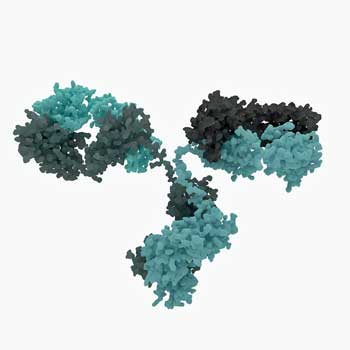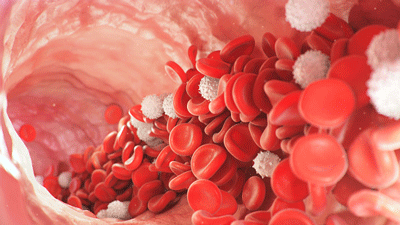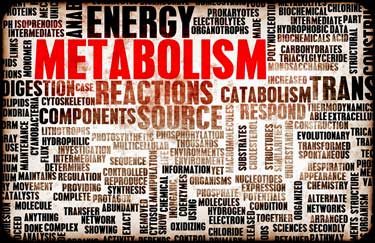


Individual research grants to researchers from outside RECOVER provide important creative inputs into the project.
From the beginning, the RECOVER Initiative has focused on building out the massive infrastructure needed to follow and study approximately 18,000 participants. Hundreds of millions of dollars have been spent creating the main thrust of the Initiative. About a year after they began enrolling people into the study they’re about 60% of the way there.
Funding for grants for individual researchers is part of the Initiative as well, though, and presents an important opportunity for researchers outside the initiative to bring their own creative insights to long COVID. The vast majority of potential long COVID researchers, after all, are not in the RECOVER project.
Six, eight months (?) after the Initiative reported they had given out their first tranche of long COVID grants, they finally got around to releasing some information on them in August. They give us our first chance to see the fields of interest the Initiative funders are most interested in. Forty-long COVID research projects were supported to the tune of $37 million.
Uncovering RECOVER?
I used the NIH Reporter database that lists ongoing NIH-funded studies to dig into the studies and quickly hit a roadblock. Either the RECOVER Initiative is behind or doesn’t care to publish the details of its studies but of the 40 funded studies only five showed up in the NIH Reporter database and these were almost all supplements to past studies which were already in the database. That meant no detailed information on what was in the study, how big the study was, how long it would last, etc. was available. In my experience, this is quite unusual. When an ME/CFS grant is given I’ve always been able to quickly find it.
It was also rather debilitating to my analysis! NIH-funded studies tend to be much more complex and comprehensive than their titles make them out to be. I had what RECOVER provided – the titles, authors, and institutions associated with the studies. I broke the studies down into questionable long COVID studies, studies not likely to impact the ME/CFS-like subset of long COVID or long COVID, and those that could impact them.

These studies seemed like a reach.
The Strange – Long COVID Grants (???) – 14%
I would be shocked if Congress had these studies in mind when it funded the RECOVER project. It’s possible that some of these studies added long COVID cohorts to ongoing studies. Still, they seem like a reach.
- Elucidating Genetic and Environmental Second Hits in Racial and Ethnic Minorities with APOL1 High-Risk Genotypes – this is a kidney disease study that was ongoing before COVID-19 and does not mention long COVID
- Imaging Neuroglial Mechanisms of Neuropathic Pain-Opioid Interaction in HIV – started in 2018, does not mention long COVID
- Prenatal Immune Activation and Maternal Mental Health as Predictors of Infant Sleep and Cognitive Development
- Role of NLRP3 Signals in Ischemia/Reperfusion-Induced Organ Injury
- GenoMISC: Genetic Determinants of Multisystem Inflammatory Syndrome after SARS-CoV-2 Infection in Children (MIS-C) – multisystem inflammatory syndrome is a highly dangerous, nasty syndrome that often lands children in intensive care but it occurs in the first couple of weeks after an infection; i.e. it’s not a long COVID issue.
Studies Not Relevant to ME/CFS-like long COVID or ME/CFS – 24%
Long COVID can produce many different sequelae or outcomes so it was expected that some studies will not fit the ME/CFS-like Long COVID category or phenotype. Studies focusing on hospitalized patients – while they may provide some clues – are included here as well as most ME/CFS-like long COVID patients were not hospitalized and hospitalized long COVID patients may have confounding factors. A consortium grant was included in this category as well.
- Long-term Sequelae of SARS-CoV-2 Infection: Diabetes Mellitus – diabetes is not increased in ME/CFS
- Mechanisms of Long-term Taste Loss in Post-Acute Sequelae of COVID-19 – in database – taste loss is an issue in long COVID but not in ME/CFS
- Obesity, Insulin Resistance, and PASC: Persistent SARS-CoV-2 infection and Inflammation in Human Adipose Tissue – obesity is not an issue in ME/CFS
- Origins of Post-Acute Sequelae SARS-CoV-2 Infection (PASC) Lung Fibrosis – lung fibrosis is not an issue in non-hospitalized long COVID patients or in ME/CFS
- Tissue and Organ Specific Human B Cell Immunity: Supplement — Metabolic Risk Factors and Inflammation in PASC Development – another obesity and diabetes study
- Tryptophan Metabolism and Microbiome in Long-COVID Related Kidney Disease – kidney disease is a possible outcome of COVID-19 but is not increased in ME/CFS
- (PASC) in the Heart: A Cardiac Magnetic Resonance and Autopsy Study – there is no evidence of damage to the heart in ME/CFS
- Deciphering the Link Between Severe Acute Respiratory Coronavirus 2 Infection and Long-Term Neurological and Pulmonary Sequelae – appears to be on hospitalized patients
- Post-Acute Sequelae of COVID-19 (PASC) Investigators Consortium Phase 2: Researching COVID to Enhance Recovery (RECOVER) – this appears to be funding for a consortium…
The Good: ME/CFS-like Long COVID Studies 62%
About a third of the RECOVER grants, then, do not have the potential to impact the ME/CFS-like group of long COVID or ME/CFS. That leaves almost 2/3rds that might.
Immune and Viral Persistence

The four autoantibody studies were welcome.
It was no surprise to see more immune system grants than any others. No less than four studies on autoantibodies – an area of clear interest in ME/CFS – was good to see. The ACE-2 autoantibodies study was a nice bonus given that the virus enters the cell through the ACE-2 receptor and some studies suggest that the ACE-2 receptor is messed up in ME/CFS as well. Autoantibody damage to that receptor could explain a lot in both diseases. Only one study, though, featured EBV.
Oddities – Some odd things showed up in this category. The RECOVER Initiative’s history with children is problematic. Despite the fact that few children did poorly with COVID-19, and adults make up the vast majority of ME/CFS cases, the Initiative was originally slated to follow as many children as adults. That has apparently changed. Their main page is only tracking adult enrollment. Three of the studies are studying children. One wonders, given the changing immune map in children how much they will tell us about adult onset long COVID.
Ditto with the “Immune and Neurovascular Signatures of Psychiatric Post-Acute Sequelae”. We certainly want to see studies on the blood vessels in the central nervous system but how did “psychiatric” become a focus? Scott Russo, the lead researcher has been focused on “the neural and immunological basis of neuropsychiatric disorders”. He’s received many NIH grants and is currently assessing whether “chronic stress induces neurovascular damage that weakens the blood-brain barrier and allows immune cell entry into the brain”. It’s interesting stuff but psychiatric issues are hardly central to long COVID.
There’s also the “Sex, Obesity, Immunometabolism and Viral Persistence” study. One wonders how obesity become an object of interest. This study is one of the few, though, has a detailed description – and is on much more than obesity. It will also employ the same single-cell RNA sequencing that allowed Grimson to recently highlight monocytes in ME/CFS, will focus on metabolic gene expression, and employ a recently developed mouse model. All in all, it’s an excellent study. Only one study, unfortunately, appears to be looking at viral persistence.
- Features and Functions of ACE2 Autoantibodies that Developed after SARS-CoV-2 Infection
- Characterization of Autoantibodies in PASC
- Functional Immune Responses in Children with Post-Acute Sequelae SARS-CoV-2 Infection
- Host Response to SARS-CoV-2 Infection and Its Role in PASC
- Immune and Neurovascular Signatures of Psychiatric Post-Acute Sequelae of SARS-CoV-2 Infection
- Molecular Determination of Risk for PASC by High Sensitivity Serological Analyses of Inflammatory Pathway Markers, Prior Viral Histories, and Autoantibodies
- Sequencing B Cell Repertoires to Elucidate Autoantibodies and the Role of EBV in PASC
- Sex, Obesity, Immunometabolism, and Viral Persistence in Post-Acute Sequelae of SARS-CoV-2 Infection
- Understanding Adaptive and Innate Immune Cell Dysfunction in Patients with PASC

The cardiovascular system was. thankfully, well represented.
Cardiovascular
The Gist
- The RECOVER Initiative has spent hundreds of millions of dollars building out the infrastructure to support its big study – following and analyzing 18,000 people.
- Grants from outside researchers, though, are important as well. The vast majority of potential long COVID researchers, after all, reside outside the RECOVER Initiative and they can provide creative insights that Initiative investigators might miss.
- In August RECOVER released the titles of the 40 grants it funded to the tune of $37 million dollars. This blog assessed them for their potential impact on the ME/CFS subset of long COVID and ME/CFS itself.
- Because, strangely enough, almost all the grants do not show up in the NIH’s Reporter database of NIH-funded studies, much detail was missed.
- It was hard understanding how 15% of the grants met the definition of a long COVID grant. A further 24% of the grants focused on the non-ME/CFS subset of long COVID (such as diabetes, kidney disease, etc.). About 60% of the grants clearly focused on the ME/CFS subset of long COVID.
- As expected immune system grants lead the pack and the strong focus on autoantibodies was welcome. EBV reactivation has shown up in several major studies but unfortunately was assessed in only one. The blood vessels and cardiovascular system, and the metabolism – two areas the NIH might have passed on – received good interest – as did the nervous system and brain.
- Surprisingly, the autonomic nervous system – obviously a key player in long COVID – received only one study. Unfortunately, no exercise physiology studies – so important to the field of ME/CFS – were funded. Neither were any microbiome or mitochondrial studies.
- Overall, the slate of studies seemed strong but the number of studies being funded and the amount of funding devoted to them, though, was surprisingly low. RECOVER is a $1.15 billion Initiative yet it provided all of $40 million to individual research projects – just 2 1/2 times the funding ME/CFS gets in a year.
- Why that was so and other questions have been forwarded to the RECOVER Initiative.
- Cerebral Vascular Pathology of COVID-19
- Cardiac Inflammatory and Microvascular Alterations Associated with Post-Acute Sequelae of SARS-CoV-2 Infection
- Cerebral Microvascular Integrity in Children With and Without Persistent Central Nervous System Symptomatology
- Machine Learning-Assisted Characterization of Cardiovascular Long COVID-19
- Pathophysiological Mechanisms of PASC: Inflammatory Mediators of Endothelial Dysfunction in the RECOVER Cohort
Neurological and Sleep
Four studies were focused on the nervous system – two of them on sleep – a much-neglected area in ME/CFS.
The “Neurological Sequelae Associated with Post-Acute SARS-CoV-2 Infection” study is fascinating and gives us a glimpse of how much we missed by not having the details of each study. Their preliminary data suggests that a hidden reservoir of infection is throwing the T-cells off and that ACE-2 receptor dysregulation is damaging the blood vessels in the central nervous system. They believe the blood vessel damage is throwing the sleep/wakefulness centers in the brain off.
The one small fly in the ointment with this study is that it’s focusing on older (65 years +) patients and the result may not apply to younger ones. Still, this is the kind of innovative study we would hope for from RECOVER.
- Cerebrospinal Fluid in PASC: A Window into the COVID Mind
- Viral and Immune-Mediated CNS Pathology During SARS-CoV-2 Infection
- Neurological Sequelae Associated with Post-Acute SARS-CoV-2 Infection (NEURO-PASC)
- Role of Sleep in PASC Recovery and the Development of Immunological Memory
Multi-omics
It was good to see metabolism and viral persistence show up here. Lissa Selin will probably be happy to see the “bioenergetic T-cell fatigue (exhaustion?)” show up as she can pretty convincingly show that T-cell exhaustion could explain a lot in these diseases.
- From Big Data to Big Knowledge and AI: Connecting Multi-omics COVID-19 Cohort Data to Knowledge Graphs to Explain Pathophysiological Mechanisms of Long-COVID
- Metabolic Dysfunction, Viral Persistence and Bioenergetic T-Cell Fatigue in Post-Acute SARS-CoV
Metabolic

Metabolomics has become a hot research topic in ME/CFS. The RECOVER Initiative funded 4 metabolic studies.
One might have liked to see more metabolic studies given the insights they’ve provided in ME/CFS, but then again metabolism might have been one area that the NIH ignored, and we got four studies that featured metabolic analyses of one sort or the other.
- Metabolic and Epigenetic Mechanisms of PASC
- Post-Acute Metabolic Sequelae of SARS-CoV-2 Infection in Nonhuman Primates – still studying primates?
- Metabolic Dysfunction, Viral Persistence and Bioenergetic T-Cell Fatigue in Post-Acute SARS-CoV (again)
- “Sex, Obesity, Immunometabolism and Viral Persistence” (again)
Genetics
- Epigenetic Alterations and Phenotypes in Innate Immune Cells and Their Progenitors in PASC
- Viral and Host Genomics Influences on the Phenotypic Expression of COVID-19 Infection and Its Sequelae in Children of Varied Genetic Ancestries
Autonomic Nervous System (ANS)
A big surprise was how little funding went to autonomic nervous system studies given the prominence of ANS symptoms in long COVID.
- The Autonomic Complications of PASC Stanford study
Others
- Improving Understanding and Diagnosis of Post-Acute Sequelae of the SARS-CoV-2 Infection
- Long COVID in the Eye (LoCEYE) Study with the RECOVER Initiative
The Bad
The one major missing element was the absence of any of the exercise physiology studies which have been so revealing in ME/CFS and in long COVID as well. Because they potentially point to the core problem in these diseases – an inability to produce normal amounts of energy – the lack of exercise physiology studies is distressing. (That said, we don’t know if exercise or any other stressors are included in these studies. ) It was surprising as well, not to see any gut microbiome studies or mitochondrial studies.
Conclusion
Given the lack of detail provided about the studies, and the complexity of the studies the NIH typically funds, this overview missed a lot. About 15% of the studies either did not appear to meet the definition of long COVID studies or only tangentially meet them. Another quarter of the studies were on subjects not pertinent to ME/CFS or the MECFS-like subset of long COVID. Almost 2/3rds of the studies were, however.
As expected immune system grants lead the pack and the strong focus on autoantibodies was welcome. EBV reactivation has shown up in several major studies but unfortunately was assessed in only one. The blood vessels and cardiovascular system, and the metabolism – two areas the NIH might have passed on – received good interest – as did the nervous system and brain. Surprisingly, the autonomic nervous system – obviously a key player in long COVID – received only one study.
All in all, despite a few quirks it’s a strong slate of studies and should be helpful. The number of studies being funded and the amount of funding devoted to them, though, was surprisingly low. A year and a half after the $1.15 billion RECOVER Initiative started it provided all of $40 million to individual research projects. That’s just 2 1/2 times the funding that ME/CFS gets in a year and seems like a drop in the bucket for an Initiative that should be getting as much outside creative input as it can.

A surprisingly small amount of money went to funding outside grants.
Did the Initiative not get many applications or is the RECOVER Initiative just not interested in funding outside researchers? (I remember something about a short application window.) I have a list of questions for the RECOVER Initiative that they have promised to answer.
Almost two years into the RECOVER Initiative it’s published one study thus far! Let’s hope the next year brings us more. It should.


 Health Rising’s Quickie Summer Donation Drive is On!
Health Rising’s Quickie Summer Donation Drive is On!



“EBV reactivation has shown up in several major studies but unfortunately was assessed in only one.” Also no microbiome or mitochondrial studies?
Bizarre.
We’ll probably never know but it’s possible that the Initiative didn’t get any mitochondrial grant applications as they are a hot subject in ME/CFS but not yet in long COVID. Which is one reason we really need more long COVID exercise physiology studies to indicate that problems with energy production appear to be present and the mitochondria might be involved.
I was surprised there wasn’t more on EBV or any gut microbiome studies – two pretty easy targets!
I couldn’t find the announcement but I seem to remember hearing about a short application period that caused some upset. That might be part of it.
Here is an example of a recently published study from Sweden showing this (among other things). https://www.frontiersin.org/articles/10.3389/fimmu.2022.949787/full
I took part in the study and this is the first paper in and it is likely to be more down the line.
They call them “latent viruses” but my Epstein Barr virus is never “latent”.
That is the cause of my ME/CFS in my opinion.
I wish more research focused on this.
When my husband said not to get too excited about ‘research’, he said he expected it to be 5-10 YEARS before anything that MIGHT help me with my ME/CFS.
I thought he was being too pessimistic. Now I think he was being an optimist.
Unless one of these studies ACCIDENTALLY turns up something really important and significant, all this shows is possibilities of inching along the trail already drawn. Which may be how research progresses, but the Covid virus doesn’t care, and those of us waiting for decades are hoping for something more than this slow ‘progress.’
I already retired, and had decades of being on disability. The WORLD needs the recently-damaged long-covid victims to get back to work (and life, of course) because their economic impact from not being able to work and needing support and healthcare is unbelievably HUGE, and too many governments are STILL trying to sweep it under a rug.
The whole point of long COVID for ME/CFS was that things would continue to inch forward! I don’t think they will. $1.15 billion dollars seeds a lot of expectations – let’s hope the RECOVER Initiative lives up to them.
More RECOVER funded clinical trials should be announced soon. What I’m hoping for in the short term are repurposed drugs that might help. I just saw something – shades of Abilify – on another antipsychotic drug that might help – I can’t remember how..
I did NOT try Abilify on purpose – a main side effect is weight gain, and I don’t need any more.
I’m already on low-dose Naltrexone, which helps with other pain, but nothing related to the main problem, not for me.
I have overreactions to most drugs, and especially if they have ANY side effects that affect the brain – I lose days with the simplest of drugs which list something like ‘confusion’, ‘visual problems’, or any other psychiatric lovely possibilities. I just lost a week to furosemide, a ‘mild’ diuretic which destroyed my thinking ability.
And there are an awful lot of drugs which COULD be repurposed.
This could take forever if we don’t know a CAUSE that is single and specific and fixable (which we can’t guarantee).
I NEED certainty – and I have to try to live meanwhile. Nothing better so far. So I’m not getting my hopes up – and continuing to write my mainstream fiction with an ME/CFS main character (much younger, but in the same no-answers boat): it’s been many years, and we need to live whatever life we still have.
You sound so much like me. I keep using the little bit of SSI I have left over trying to find natural supplements that help because I’ve never had a drug that worked and didn’t make me worse. I have found Berberine from two sources that work for keeping my glucose in check, because I can’t take Metformin. But I can’t afford all the supplements recommended and Medicaid doesn’t pay for those things that work. Only drugs. They will pay for drugs and watch me die, but won’t pay for vitamins, nootropics, Low Dose Naltrexone, etc. I’ve been trying to get a a doctor to do a mobility evaluation for 8 years that I’ve been bed bound but they can’t bother to get the codes and referrals done. I takes to my last primary doctor on Telehealth about these things and she didn’t even know what Low Dose Naltrexone was. She obviously didn’t listen when I explained it to her. Even though she said she would study on it and get back with me, she never did, and after three virtual visits and getting nowhere I gave up. I had to go to the ER for a visit and they said my record showed I was on Naltrexone 50mg! I was furious because I’ve never been able to take a few days of an opioid let alone get addicted and she not only failed to understand that 50 mg is a level
To treat addicts, but I’ve never ever gotten a prescription for it. I was trying to get her to write one to try .5 mg because I have been too afraid to try anything for years and wanted to start very small. I’ve since seen an anesthesiologist on you tube that said some people he administered anesthesia to could not be put to sleep and some who had awareness during surgery. That is too scary so because of my illness and risks I’m afraid to try now. I was so hopeful. She tried to get me on an SSRI. I told her the success for those is 11-13% at best and very much higher for LDN. She didn’t know that, either.
Prayers for answers and good health to you and everyone on hear grasping for hopeful news.
You need to straighten that naltrexone problem out – if you didn’t get and fill a prescription, it shouldn’t be in your medical record, and will foul things up for anyone looking not to give you pain meds.
I’m sorry, but I don’t look for supplements – I don’t believe in their unregulated properties and strengths. The whole concept scares me silly.
Since I seem to react to most regular approved drugs, I don’t try them unless I have to – and the results have not been good, so I just stop taking them as soon as I can. I take Celebrex for pain – it was the only drug out of many that works for me for the ME/CFS pain.
I’m on ldn at a tiny dose which helps with back pain. Before surgery last September I had to tell the anesthesiologist all this, and was off both Celebrex and ldn for a week before surgery – during which time they tried me on several opiates which messed my gastric system up very badly. After surgery, it took over a month to get my Celebrex and ldn to work again – and massive doses of fiber and such to get rid of the effects of the opiates.
They need to know what you’re on to sedate you and keep you alive for surgery (this was at Stanford), and they had no clue how to get me back to normal-for-me, and didn’t really even try. Unfortunately, the surgery was necessary. And worked. And I survived. But it was very bad after.
Not planning on any more surgery, etc., until we’re cured, and I can heal normally. Until then, the absolute minimum to get through each day.
I totally agree – we need to learn now to best live whatever life we still have.
Any updates on Cortene?
Nothing on Cortene as yet.
I’m optimistic because the drive to find any drug be it existing or not is going to rapidly speed up. For example my doctor let me go on anticoagulants after I presented the Long Covid and ME/CFS studies on micro clots.
I also just say I have Long Covid with PEM now as is semantics. Same disease that puts ME/CFS back in the front of the queue with Long Covid patients.
They should just give all the funding to Ron Davis and other leading ME/CFS researchers. Imagine the progress for both LC and ME/CFS with minds like those directing the search efforts.
I mean, maybe leave a percentage for novel investigations by new researchers to the field, as they may well come up with something usable.
any future for studies on peptides? my loved one was helped by ThymosinAlpha 1, but had to stop it because of difficulties sourcing in California.
Amen! Dr Davis, Dr Lucinda Batemen, and their peers should be driving the train!
It is just infuriating to be shooting in the dark with starting useless new long trials that will
Prove what they already did years ago.
Great review Cort.
“Two out of three ain’t bad” – that is until you check the terms and conditions. The exclusion of exercise physiology, microbiome and mitochondrial studies would support that organisational dysfunction of some type or another is still playing a major role in RECOVER. Is anyone going to have to justify this list to the purse string holders (for instance, US Congress)?
Tryptophan Metabolism and Microbiome in Long-COVID Related Kidney Disease – That is potentially an interesting mix of two key ME/CFS areas of interest. That is, assuming that the Tryptophan metabolism is related to Dr Phair’s/Prof Davis’s work (there probably isn’t enough detail to assess)?
I don’t have a clue about what it takes a massive project like this but RECOVER has 23 different committees and task forces. https://recovercovid.org/leadership Maybe they are necessary but it does make one wonder how things get done.
thank you cort! for the effort (i copyd) , you wrote: I have a list of questions for the RECOVER Initiative that they have promised to answer.
Almost two years into the RECOVER Initiative it’s published one study thus far! Let’s hope the next year brings us more. It should.
thank you for questions. you know i have no high hopes from long covid for ME/cfs (all kinds , not only infectious ones)
i simply can no more and get worse and worse. and with me, so many.
and in belgium you can forget it totally…
and Cort, may i ask, are they in the US speaking (doing something) about the post vaccination desease? in the UK parlement 1 person is at least debating about it, to do something for those people.
And what i would like to read is (all kinds) of ME, not only infectious ones. and with long covid, even if they find things, treatments, no one is saying that they will then suddenly have money to do the research in ME/cfs. or treatment trials taken over from long covid ME/cfs to ME/cfs. (all kinds)
I remember reading that at least one study was underway looking at post-vaccination disease but I don’t know which one or one’s
thank yoy Cort for your answer!!! hope something comes out soon…
as soon as the vaccines 🙂
This is the same issue we see with money and the federal government ad infinitum. Look at all we know about the Covid Act funding that was used for all types of political purposes that had nothing to do with Covid. This is a big hunk of money and hey, the NIH is political. Huge committees of people?? Not calling this pork barrel spending, but the agendas for other types of research projects will end up being funded by RECOVER.
Some amazing scientists are trying hard to find a solution. I want to stay optimistic. If you have not read it yet, I highly recommend the LDN Book 3 published in Kindle October 2022. Dr. Sarah J. Zielsdorf, MD, does a fine job explaining long-Covid as Encephalitis lethargica and polymicrobial sepsis. Words I never heard before. Thank you Cort for your unrelenting efforts on behalf of the millions missing.
SOURCE: The LDN Book 3: Low Dose Naltrexone: The Latest Research on: Viral Infections, Long COVID, Mold Toxicity, Longevity, Cancer, Depression and More
That’s interesting. Encephalitis lethargica is very Parkinsonian-looking illness — patient look like statues, lots of tremors, rigidity, gait and ocular disturbances, and radical behavioural changes. It looks the same as far as it’s an epidemic, but I haven’t seen long-haulers with similar complaints or Parkinsonian-like brain damage. Obv, I should read the book, but I need it on audio.
My daughter has tremors, and memory and behavioral changes, lethargy, profuse swearing and other symptoms, since Long Covid took over her life 15 months ago. She even took up a vaping nicotine which is totally something she would never have approved of or tried even once before her judgment was affected. She just admitted it, she’s been hiding it, and she said it was after they put her on Prozac and she was having so much difficulty she thought it might level her out. Maybe she read it or just had a strange notion, idk, but I thought where has my daughter gone? She got upset tonight that someone decided to use the cutting board to set the fruit, garlic, ginger, etc on. She said now we can’t use the cutting board. Her boyfriend told her that she did it a couple weeks ago. She didn’t believe him. I told her, yes, you said, “Everyone wants a change sometimes, a different look.”, that day you felt up to cleaning the counter tops off. It has been 15 months that her boyfriend has to do all the housework because she and I are too weak.
My daughter has a lot of those since she has had Long Covid. Memory, tremors, profuse sweating, PEM, extreme fatigue, and more.
What has Long Covid got to do with ME and CFS? It’s a different virus. Lots of viruses cause brain dysfunction but only enterovirus causes ME I believe (HYDE)
The enterovirus hypothesis has never been proven. Hyde speculated it was the enterovirus and Chia has gotten closest to demonstrating it is involved but it hasn’t been studied by other researchers.
On the other hand, studies show that all sorts of pathogens including the coronavirus can trigger ME/CFS and they all appear to produce the same set of symptoms. Thus far studies suggest the long COVID and ME/CFS are very similar.
Hey Cort, do you know if there are any plans to fund a WEX study on long COVID patients?
I’m afraid I’m out of the loop on WEX! What is WEX?
Hey Cort, WEX is whole exome screening. It’s basically genetic testing that evaluates the entire genetic sequence, not just protein coding regions. Combine with MTDNA (mitochondrial DNA) it’s a powerful tool for identifying genetic similarities in affected groups and not that expensive anymore. I just paid 3000 for a screen with an eval that reported nothing, plus another 2k for a espérate eval by a top geneticist. Found a connective tissue disorder and a mitochondrial problem. This was my third round of genetic testing. Full sequencing and competent eval matter!
Thanks – I have no idea but will keep an eye out for “whole exome screening”. Congrats on those results! A good geneticist clearly matters. We’re going to have to add geneticists to our Big Map program that’s coming out soon so people can find good ones.
I’d be willing to do that if anything was offered. I’ve been doing my own DNA evaluations with whatever I can afford. Life Lifehacks and an app that does a great job for free, and your dna and info stays on your phone. I think Insaw some connective tissues issues, too. Neurofibromatosis (but other than nodules under my skin I assumed was Lipodema, I don’t have any eye signs or outer signs). But I have MthFr heterozygous and slow Compt pathways which it says can cause problems with meds, which I sure have.
I’ve been thinking a lot about why they aren’t looking more at genes? Maybe they are. It could be the way EBV and Lyme, or other virus Lea I’ve had works in these genetic situations that turns on the problem. I know that I fought the diagnosis with strong denial when my doctor said I had Fibro because I knew it wasn’t taken serious. And not being able to walk ten feet all of a sudden without collapsing was serious! That lasted four days each time the first few times, then when I could walk normally again, I went back to pushing my over achieving self, not listening to the signs my muscles were burning and aching and exhausting, for decades I did that. I’ve seen some who have suggested that pushing through the exhaustion can make it permanent and if you rest and don’t push yourself you can possibly come out of it in about three years. So just in case, knowing what I did and how horribly it went wrong, I’ve advised my daughter to not do what I did and maybe she will be a lucky one. She has had some improvement, mostly the Propranolol has helped with lowering the tremors and profuse sweating, but when she forgot it a few times, they always come back. Some gastro, beaches, insomnia, and fatigue has eased up with the fatigue being the least of the improved, but it seems like her memory is getting worse.
Will you let me know where you received WEX and MTDNA (mitochondrial DNA) testing? Through a genetics counselor, maybe? And what part of the country? Thanks.